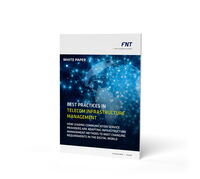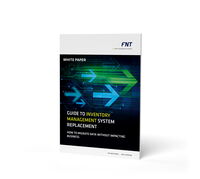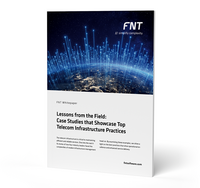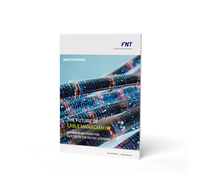Centralized Management of All Network and Service Resources
Disruption within the telecommunications industry is impacting all areas of business. How an operator responds to these challenges will determine the success of their digital transformation and ability to remain competitive in a hyper-connected digital world.
Becoming a digital service provider (DSP) is a top priority for most telecommunication companies. They know they need to transform to stay competitive. Improved digital processes and workflows and increased automation make it possible to launch and fulfil new product and service requests faster, increase service quality, and further reduce operating costs. But to leverage the advantages of digital workflows and automation, a holistic and complete digital view of relevant assets and resources is needed. Yet, this is the one thing service providers often lack.

Based on EMS/NMS integration, the physical and logical resource data can be automatically reconciled and updated according to network changes. In planning mode, users can schedule network transformations and changes. They can also see the impact of planned changes before implementation. Work orders are created automatically, for changes to both physical equipment and logical connections. Corresponding asset information can be managed in combination with the integrated spare part management functionality.
The solution integrates with key systems, such as existing ERP systems, to consolidate and share data. Relevant repair, change, and rollout processes can therefore be managed using integrated workflow capabilities.
Use Cases
Major Benefits
- Identify affected services and customers immediately in case of outages
- Provide data enrichment to optimize incident and problem management processes
- Prioritize tasks in daily operations to avoid SLA breaches accordingly
- Differentiate and manage various types of service protection scenarios
- Manage diverse routing end-to-end on active transport and passive infrastructure layer
- Cross media auto-routing on circuit and service layer
- Identify services and customers affected by a planned activity and inform them in advance
- Identify protections and plan necessary circuit re-routing to avoid SLA breaches
- Make informed decisions by knowing interdependencies and implications of changes at any point in time
- Plan network expansions and rollouts based on accurate as-is documentation
- Automatically create work orders for field teams to execute planned tasks
- Keep data current by automatically updating the documentation as a result of planning
- Achieve a closed loop by comparing planned resources with actual network and correcting any errors
- Gain transparency on capacity utilization across the network on all resources and layers
- Optimize usage of links and capacities based on comprehensive reports and dashboards
- Optimize CAPEX investments by executing capacity expansion where required













